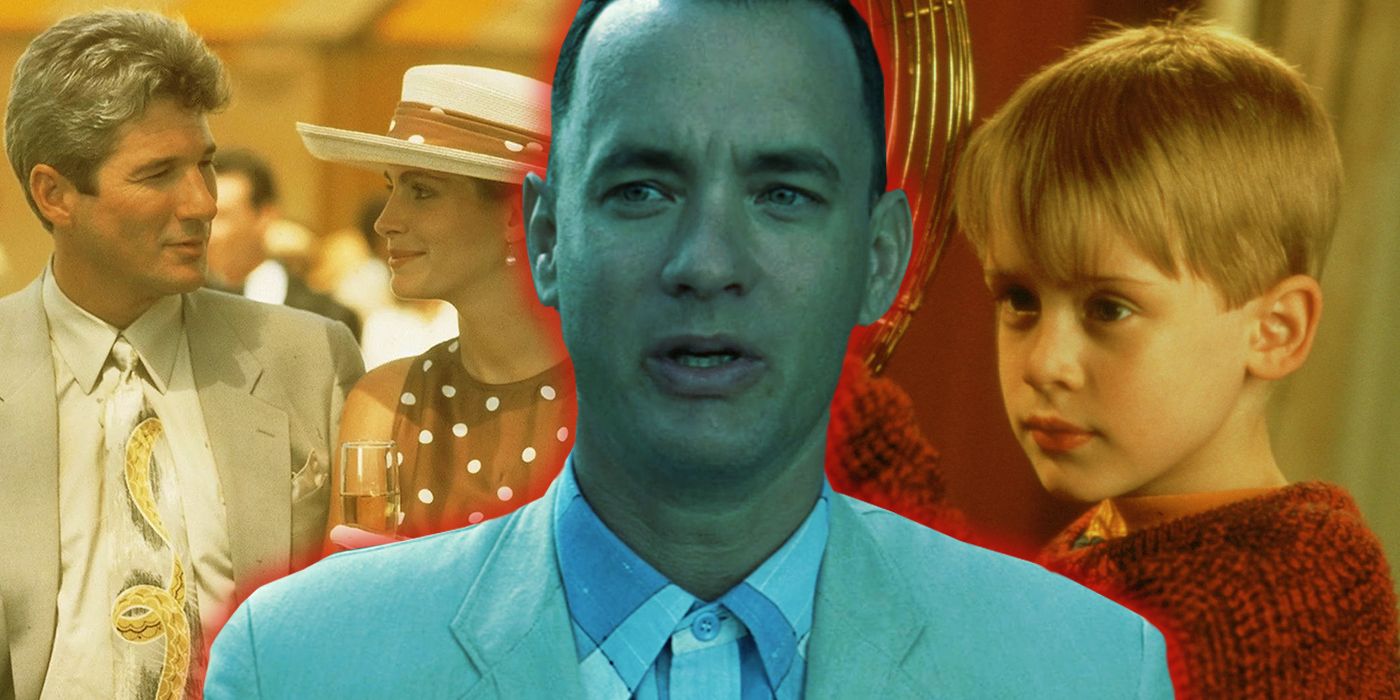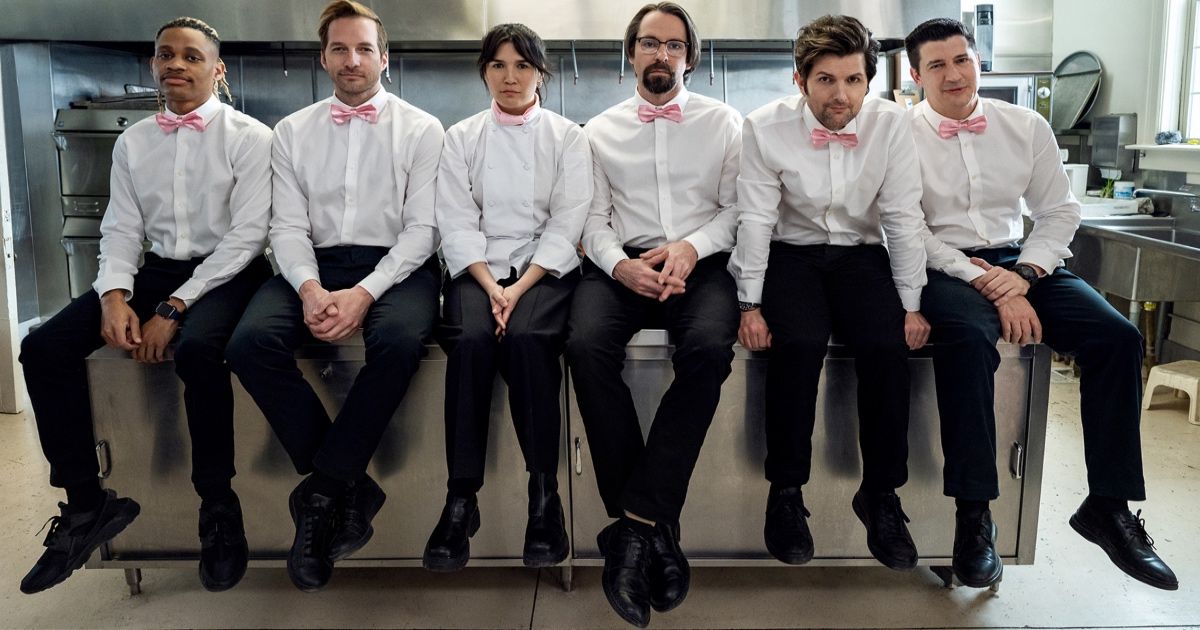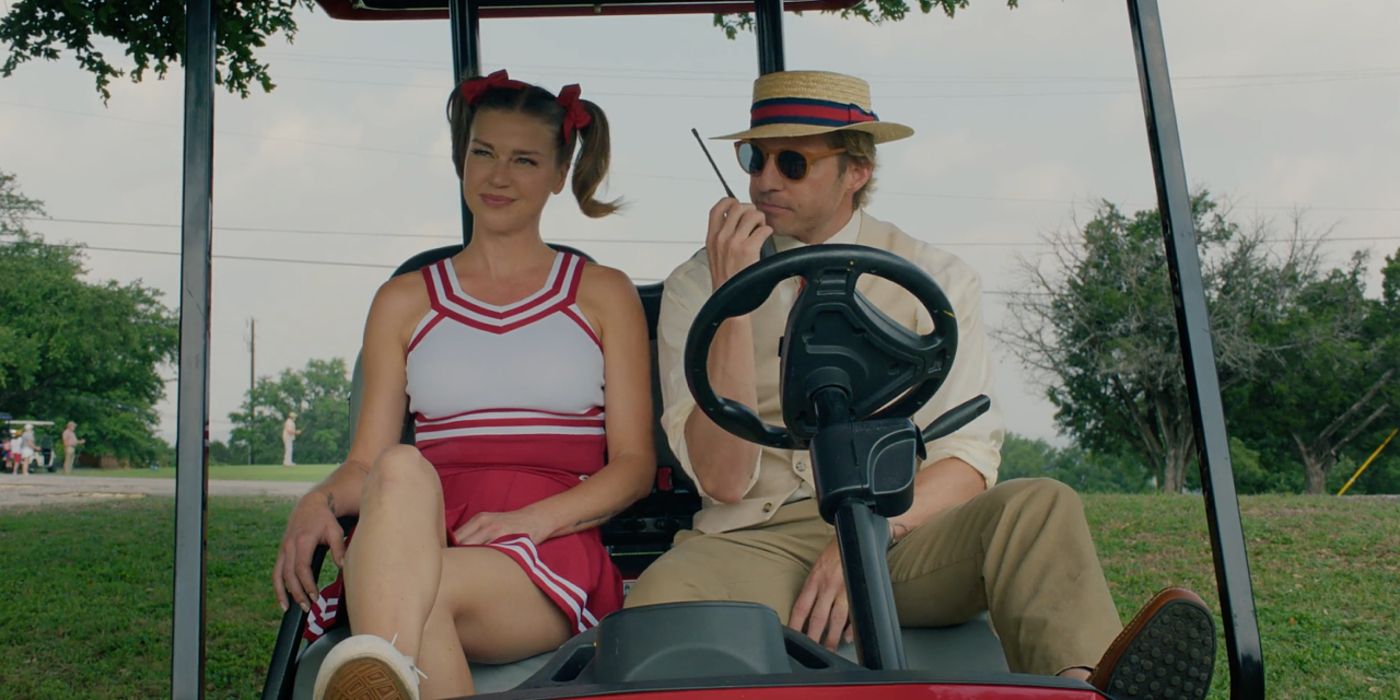The power of an intrinsically bound community and a nostalgic love for a longstanding establishment are film tropes that routinely surface. They bring on a familiar sense of warmth, like a tight hug from an old friend, despite bearing a fairly stiff formula: A small business or some heritage site happily carries on like it has for decades. A powerful figure steps in and threatens to enforce modern, soulless changes — sometimes boasting plans to tear the place down and use its land to build a strip mall or cold housing complex. Said real estate tycoon, investor, developer, et cetera, is typically defeated by natives who unite to save their favorite establishment, green space, or third place. In some cases, a dollar sign-eyed figure changes their tune by the end of the film, relishing the beauty of shared identity and historic preservation.
These themes are woven into films like Who Framed Roger Rabbit, Barbershop, and The Muppets (2011). This very specific subgenre is welcoming a newcomer on April 25, 2025. Called The Salamander King, the Dallas International Film Festival entry follows the eclectic staff of the Austin Municipal Golf Course, a.k.a. MUNY: a rinky-dink public course that doesn’t adhere to the stuffy code of conduct or traditional values of stereotypical elitist golf clubs. Trousers and collars — let alone shirts — are not common at MUNY, as its misfit staff and patrons have no interest in a golfcore aesthetic or persona. These Austinites are there to enjoy the sport, get some sun, touch some grass, and bond with their community.
Fighting to Keep the Golf Course Weird
- Comedic actors Ryan Hansen and Dulcé Sloan shine in this sweet comedy, infusing their otherwise basic characters with rich empathy.
- The inherent love for Austin is clear in The Salamander King, with niche references and shots of businesses and locales cherished by locals making the film distinctive.
- The way gentrification is highlighted feels generic and lacks variation.
- The spine of the film as well as the quirky character archetypes lack imagination.
Austin, Texas, has become an increasingly popular city (it’s even one of the top 10 places to live in America according to U.S. News & World Report’s 2024-2025 “Best Places to Live” ranking), and MUNY has been running at a negative ROI for years. Located just five minutes away from the downtown area, MUNY’s 130 acres are uber-desirable, and Samantha “Sam” Lambert (Adrianne Palicki), a municipal government consultant, steps in to shake things up on behalf of Austin’s Green Space Authority.

Related
The 10 Best Feel Good Movies of the 1990s
The 1990s was a golden age for definitive movies of the feel-good kind, whether silly or sentimental, funny or cute. Here are the best…
Naturally, MUNY’s lax golf instructor and passionate Austinite, Ray Mueller (Ryan Hansen), isn’t too keen on Sam’s rigid approach. Ray is an upbeat man-child who lives rent-free in an Airstream trailer parked directly on the course. He spends his time hiding out in the property’s secret swimming hole, downing Shiner Bock beers while teaching beginner golf lessons, and gawking at the local strip club with the boys. Naturally, Type A Sam — a woman for the city — and Type B Ray — a man for the people — butt heads, which makes steering MUNY into a positive ROI more difficult than the Don Juan Taco Challenge. Unfortunately for the lovable weirdos of MUNY, the “Keep Austin Weird” mantra may have to take a backseat for the public course to see a profit.
Another Love Letter to Another U.S. City
The feature directorial debut from actor and passionate Austinite Austin Nichols (who you may know from One Tree Hill, The Day After Tomorrow, and Wimbledon) is a clear love letter to the culturally rich Southern city and the oddballs that give it character. Such gusto for a project that celebrates one’s city and honors its quirky residents who hold sentimentality and inclusion close to their hearts can be blinding. Shots of beloved local spots like Tex-Mex favorite El Arroyo, the historic Paramount Theatre, and “Austin’s premier gentleman’s club,” The Yellow Rose (which is also seen from the inside during the film’s first act), can’t mask the reality that the bare bones of The Salamander King‘s plot lack originality.
.jpg)
Related
From No Country for Old Men to Easy Rider, these are the 11 greatest movies that are set in the Southern States of the USA.
The unique aspects of the film are directly related to Austin history, as the fictional Austin Municipal Golf Course itself is based on the real-life fight to save the Lions Municipal Golf Course. The real MUNY became the city’s first public golf course in 1924, and, according to Golfweek, “one of the first peacefully desegregated golf courses in America” in 1950. The Salamander King makes slight changes. “Austin Municipal Golf Course, founded in 1916, is a recreational haven for the people,” Ray tells Sam during a tour. “It also has the distinction of being the first course in Texas to allow women on the grounds.” Of course, Sam clarifies that “dogs were given the same right eight years earlier,” one of many nods to Austin MUNY’s imperfection.
A Trusty Band of Misfits Offers Cookie-Cutter Characters
With a long-standing sign that declares “Swingers Welcome!” and the MUNY staff’s tendency to allow a throng of LARPers to battle on the green property for free, The Salamander King has a few bits that really work. They feel equally stupid and clever, a winning combo. However, adoration for Austin (with screenwriter Drew Mackintosh also pulling from his experiences, specifically those from Lions Municipal) feels more authentic than the characters themselves, who feel like copy-and-paste tropes.
Ray is the free spirit who hates change but could surely use some. Sam is the realist workhorse, a city newbie who realizes she has much to learn about the place she’s trying to sanitize. Sam’s boyfriend is the misogynistic, narcissistic Mr. Wrong who looks down on the film’s leading lady and has a stuffy, high-paying job. He’s a rich Stanford alumnus and A.I. tech bro named Dylan Hench (Justin Chatwin), a man who admires polarizing “alpha males” like Joe Rogan and Elon Musk. Dylan feels especially on-the-nose, like a tongue-in-cheek joke that’s a bit too literal. He’s an amalgamation of 2025-specific toxic male traits, nothing more, nothing less.

Related
Ryan Hansen and Martin Starr reveal the biggest surprise about bringing back the Party Down cast and the possibility of a fourth season.
The entire MUNY staff is a diverse band of misfits reminiscent of the cast of Parks and Recreation, for instance. Said misfits see each other as “found family,” and it’s as beautiful as it is common in the comedy sphere. Comedian and former Daily Show correspondent Dulcé Sloan brings her always-impeccable comedic timing and charm to the role of Roberta Solomon, MUNY’s bookkeeper, purchasing manager, and grill cook. Still, her talents and quick wit are arguably under-utilized.
Yes, Even the Snobbery of Golf Can Be Gentrified
Big changes to a growing city often adhere to gentrification (a core theme of Barbershop 2: Back in Business), negatively impacting lifelong members of a community. As noted by a Curbed piece on the history of gentrification, in the 1980s, “municipal governments registered that revamping swaths of the city meant more cash in their coffers.” This particular brand of gentrification, and consequential class divide, is prevalent in The Salamander King.
When Sam prioritizes polished branding, adjusts prices, enforces a dress code, restricts outside food, and banishes the LARPers, MUNY’s total budget deficit shrinks. As the budget deficit shrinks, so does MUNY’s soul, attracting preppy white trust fund dudes who drive BMWs and Tesla Cybertrucks. Before Sam sucks the charm out of MUNY, unaware she’s doing so, Ray spits some sad truths:
“The rent in this city has gone up more than 10% every year for the last five years. There’s no free parking anywhere close to downtown. Every new road has a toll on it. People are tired of getting squeezed, Sam.”
One can understand why the MUNY staff wants to protect the place that charges just $30 to putt and hook whenever. When “older, duller, and whiter” people are the only ones who can afford to play, it’s clear that MUNY as it once was is dead.
Gentrification cuts both ways. (Who doesn’t love browsing art galleries and popping into cutesy coffee shops?) Keeping Austin genuinely “weird” just doesn’t align with gentrification. The Texas Observer published an essay by former Texas State Representative Wilhelmina Delco in 2019, titled “I’ve Lived in East Austin for 60 Years, and I Don’t Recognize it Anymore.” She discloses her experiences watching gentrification fade Austin’s once-vibrant Black community over several decades. The Salamander King doesn’t spotlight gentrification with a magnifying glass, leaving little room for nuance, but perhaps a greater level of detail would sour a lighthearted comedy such as this one.

Related
From classic comedies to historical dramas, these are the best golf movies from every era in Hollywood.
The metaphorical title of the film gets explained by Ray and refers to the early-1990s case of the Austin blind salamander, whose habitat was preserved when local activists argued the land was home to an endangered species. In The Salamander King, the endangered species is the creative maverick who calls heritage spots like MUNY their habitat. This message is one of the film’s stronger ones; it’s a through line that’s apparent in even a fleeting mention of Threadgill’s — a.k.a. the famous Austin music venue/beer joint that witnessed the beginning of Janis Joplin’s career before ultimately closing down.
These warmer moments are at times overshadowed by the film’s predictability and stale formulaic structure. Anyone who has seen a comedy could have predicted that Sam and Ray (who have a clear “opposites attract” thing brewing) would put their imaginative (Ray) and practical (Sam) heads together to save MUNY, spawning a community fundraising event to save the day. The whole “power of community is mighty” trope is seen in comfort films like A Bug’s Life, and shows like Cheers famously champion homey third places. Though The Salamander King offers little newness, its heart and levity may be worth it for those craving a heartily nostalgic and utterly buoyant viewing experience.
The Salamander King just had its world premiere at the Dallas International Film Festival. It will have a second screening on April 26, 2025, at 8:30 PM. Find more information here and watch this space for information about a future wide release.
This story originally appeared on Movieweb



